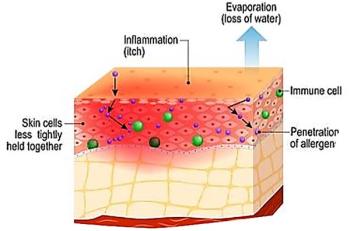
ACAAI: Asthma Deaths Decline Worldwide
PHILADELPHIA -- Asthma mortality rates are declining worldwide, largely due to increased use of inhaled corticosteroids to better manage the disease, according to a report from an international group of asthma researchers.
PHILADELPHIA, Nov. 20 -- Asthma mortality rates are declining worldwide, largely due to increased use of inhaled corticosteroids to better manage the disease, according to a report from an international group of asthma researchers.
In Argentina, for example, a recent analysis found a negative correlation between annual deaths from asthma and sales of inhaled corticosteroids during the 1990s, said Hugo Neffen, M.D., president of the Argentine Association of Allergy and Clinical Immunology in Cordoba, Argentina, at a symposium held in conjunction with the meeting of the American College of Asthma, Allergy & Immunology here.
More specifically, sales of inhaled corticosteroids increased by 441% in Argentina during the 1990s while the asthma mortality rate declined from more than 3.5 deaths per 100,000 people to about two deaths per 100,000 (P=.003), Dr. Neffen said.
The trend in Argentina is part of a global phenomenon, with declining asthma mortality rates reported in Australia, Canada, Japan, New Zealand, the United States, and many European countries as inhaled corticosteroid use has increased, Dr. Neffen said.
The trend is especially noteworthy because asthma deaths had been on the rise worldwide during the 1970s and 1980s, largely due to increasing prevalence of the disease and sub-optimal treatment, Dr. Neffen said.
However, asthma still accounts for one of every 250 deaths worldwide, many of which could have been prevented with better medical care. As of 2004, Kazakhstan had the world's highest asthma mortality rate, with nearly 2.5 asthma deaths per 100,000 people, while Iceland had the lowest rate, with fewer than 0.5 deaths per 100,000, according to a report from the Global Initiative for Asthma (GINA), Dr. Neffen said.
The United States ranked near the middle, with slightly less than one asthma death per 100,000, Dr. Neffen said.
When Inhaled Corticosteroids Fail
Despite the success of inhaled corticosteroids, not all patients respond to this treatment. For patients with persistent allergic asthma not controlled by inhaled corticosteroids, the anti-IgE drug Xolair (omalizumab) may be a useful add-on therapy, said William Berger, M.D., of the University of California, Irvine.
The Investigation of Omalizumab in Severe Asthma Treatment (INNOVATE) study included more than 400 patients ages 12 to 75 with allergic asthma not adequately controlled by inhaled steroids. After 28 weeks of add-on therapy with Xolair, symptoms were reduced by more than 26% in the treatment group compared with placebo (P=.042), Dr. Berger said.
In addition, a pooled analysis of seven studies examining Xolair as an add-on therapy for severe, persistent allergic asthma found that the drug reduced symptoms by more than 38% compared with placebo (P<.0001), Dr. Berger said.
Preliminary research suggested that inhibitors of tumor necrosis factor-alpha (TNF-a), a cytokine linked to airway hyper reactivity in asthmatics, may also be useful for refractory asthma, said Lawrence Du Buske, M.D., of Harvard Medical School in Boston. Available TNF-a inhibitors include Remicade (infliximab), Humira (adalimumab), and Enbrel (etanercept), Dr. Du Buske said.
For example, a pilot study published in the New England Journal of Medicine earlier this year evaluated Enbrel (25 mg twice weekly) in 10 patients with refractory asthma. The double-blind, crossover study found that after 10 weeks of treatment, lung function significantly improved in the treatment group compared with placebo (P=.01), Dr. Du Buske said.
Enbrel is currently indicated to reduce the pain and swelling associated with rheumatoid arthritis, juvenile rheumatoid arthritis, and psoriatic arthritis.
The symposium was sponsored by Interasthma, an international health organization focused on asthma.
Newsletter
Enhance your clinical practice with the Patient Care newsletter, offering the latest evidence-based guidelines, diagnostic insights, and treatment strategies for primary care physicians.




